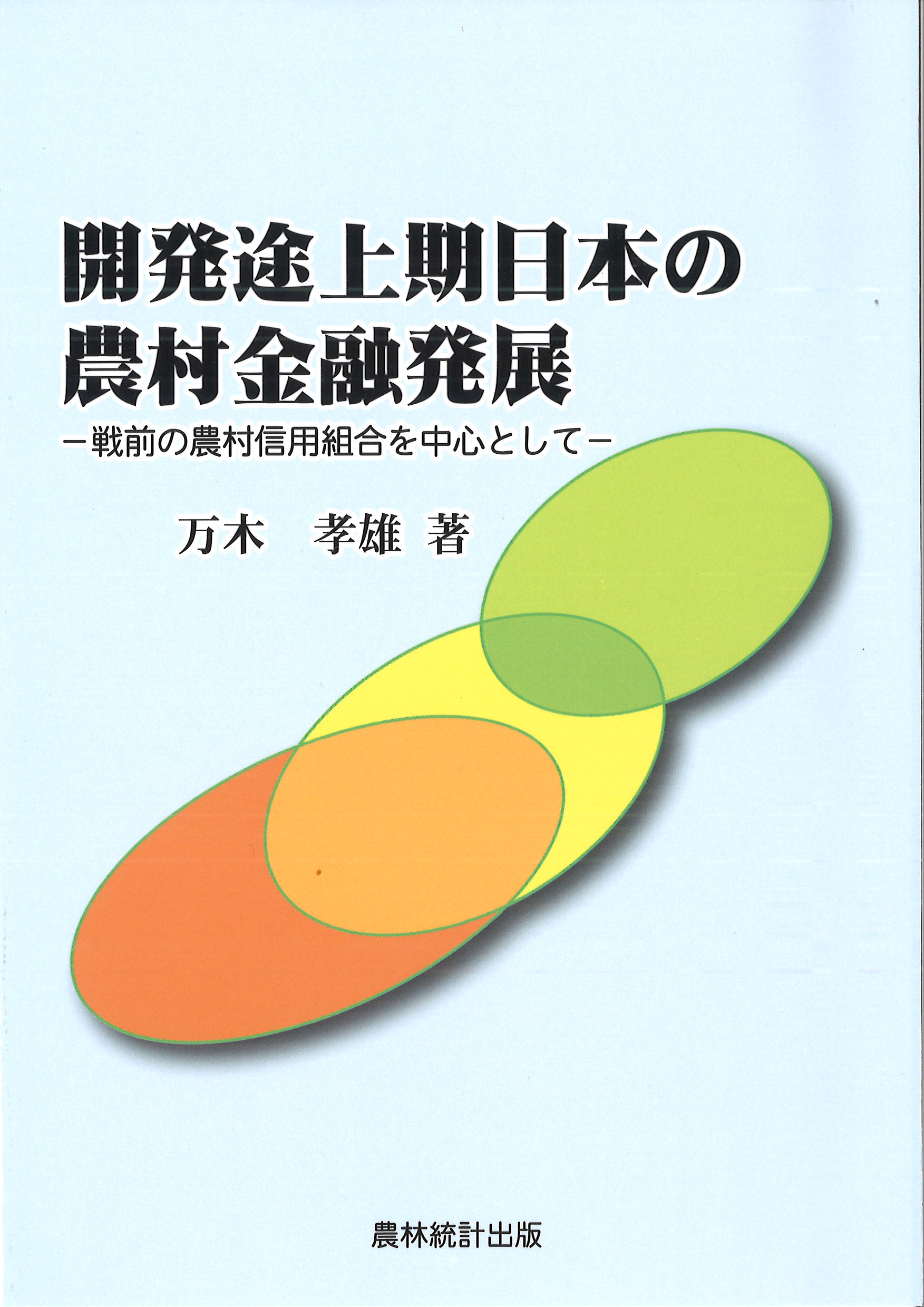
Title
Kaihatsu Tojoki Nihon-no Noson Kinyuu Hatten (Rural Financial Development in the Pre-war Period of Japan - Focusing on Rural Financial Cooperatives)
Size
188 pages, A5 format, softcover
Language
Japanese
Released
March, 2019
ISBN
978-4-89732-404-3
Published by
Norin Toukei Syuppan
Book Info
See Book Availability at Library
Japanese Page
This book is the academic result of the author’s focus on the economic development of Rural Financial Cooperatives (RFCs) in the pre-war period of Japan. The RFCs are analyzed in order to compare them to present-day rural financial institutions in developing countries. RFCs are defined as Industrial Cooperatives that carry out financial business in rural areas. In Japan, most of them were reorganized into Agricultural Cooperatives after the Second World War. This book is composed of seven papers which have been published in academic journals. It also includes the newly prepared first and last chapters. Additionally, this book contains several themes relating to RFCs, including financial business performance or cooperative profits and contributions to the development of rural industries by their business activities. These themes are analyzed by economic methods.
The academic significance of this book lies in the examination of how to apply the Japanese experience of rural finance to present-day developing countries. Previously, many analyses tended to focus on the specialized government policies in Japan. However, this book sheds light on the general formation of the rural financial market and the common characteristics of RFCs. Conversely, this book also confirms two important existing points. The first is the government’s role, which moderately supervised RFCs and steadily worked on the publication of RFC statistics. Those government policies supported the development of the financial market. The second is the cultural or historical background in which a tight human relationship existed among village households. Under this background, rural people were encouraged to participate in the cooperative and to share their economic information gained from it.
Through the analyses, this book concludes that the Japanese government in those days implemented relatively efficient policies similar to those of Western countries and that some characteristics of rural society helped people receive new cooperative businesses. In addition, if similar situations cannot be found in present-day developing nations, the author suggests alternative policies which differ from those of developed countries. For example, Grameen Bank in Bangladesh succeeds in promoting localized business policies which do not always require everyone’s participation or the government’s support. In this case, Grameen Bank is evaluated as it shows that each financial institution can establish appropriate policies by itself under its economic and social conditions.
(Written by YURUGI Takao, Associate Professor, Graduate School of Agricultural and Life Sciences / 2019)



 Find a book
Find a book

